BOV
 Yugoslavia (1982) Wheeled Armored Personal Carrier - circa 560 built
Yugoslavia (1982) Wheeled Armored Personal Carrier - circa 560 built
The Yugoslavian home-grown APC
Under Marshal Tito's leadership Yugoslavia started to cultivate a reasonably successful local armament industry, covering the need of the army and air force. Although a strong Soviet influence was still palpable, notably for armament, and the main battle tanks being still Soviet-built, Yugoslavia developed a range of less complicated vehicles in the 1970s, including the BVP M80.The latter was the equivalent of the Soviet BMP family, intended to fill the needs of motorized infantry regiments, and its genesis went back to 1969, circa 800+ being manufactured until the country's collapse. However concerning Yugoslavian motorized rifle brigades and motorized infantry units at large, Yugoslavia counted still in the 1970s on a variety of wheeled APCs of Soviet construction:
- 80 BTR-60Ps (ordered 1965) and delivered between 1980 and 1981 (used by the police).
- 40 TAB-71s (ordered in 1978 from Romania) for the police
- Circa 200 BRDM-2 (Purchase date not known)
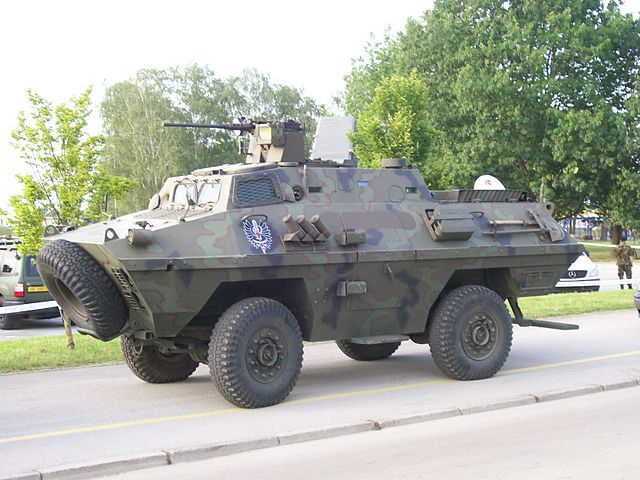
BOV VP APC
Yugoslavia will have not have its fully grown 8x8 but Serbia did it, as the Lazar, a MRAP developed in the 2000s. The BRDM was modernized at the same time a the "Kurjak". But back in Yugoslavia it's in the late 1970s that specifications were drawn up for the first time, but internally, not ordered by the JNA (Yugoslavian National Army).
Development
Development began indeed in the late 1970s at the TAM factory, in Maribor. There, the company thought to developed an armored vehicle based on the chassis of the standard military truck TAM 110 already produced in large series, and providing the needs of the JNA.First work on the BOV-1 began in the summer of 1978 at the TAM factory. FAMOS produced a platform for the antitank missiles. In the middle of 1980, two prototypes were completed and after successful tests, the BOV-1 was adopted with the JNA in 1983 under the designation of Anti-tank launcher POLO M-83, and the same year, shown at the "Jedinstvo 83" maneuver.
From the antitank vehicle was developed the regular APC, BOV-1, also called BOV M-86. This more basic armored car was caracterised by a modified armored body, which answered originally to an official request of the Yugoslavian military and federal police.
This vehicle will be produced in several hundred vehicles, and helped reduced costs, generating a whole family or variants. In service with the JNA, these vehicles were not modified except for some police BOV M-86s which had better turrets for their machine guns. A medical version was also developed experimentally (never adopted), the BOV-Sn.
This development went in all in three directions, the BOV M86 APC, the POLO M83 self-propelled antitank vehicle, and the BOV-3 self-propelled AA battery (SPAAG). After successful development of prototypes, the next step was to develop an new antitank variant called the BOV-30, which was not however adopted.
Development of the APC
The BOV by concept belongs to the armored vehicles family, intended for special tasks of the military and civilian-police. This vehicle was given not only to the regular military police, but also special units of the civilian police.Several designations were used, making the whole type more confusing:
-BOV VP: Armored Perosnal Carrier, main JNA APC.
-BOV M: Vehicles assigned to the former Yugoslavian militia. -M-86: Official army designation.
All three were developed as practically the same vehicle without significant differences. After its introduction, the BOV replaced the Romanian TAB 71, performing previously the same military police tasks, in military police battalions. Serial production started in Maribor's TAM factory in 1987.
As Yugoslavia disintegrated, more than a hundred vehicles had left the production lines but no significant improvements distinguish the first series to the late ones, but US-pattern heavy machine guns Browning M2HB ca.50 (12.7 mm) replaced soviet models for NATO standardization. It was seconded a little later by the domestic M-86 (a licensed PKT), caliber 7.62 mm also compatible NATO.
Relatively similar BOV-1 and BOV-3 had the same chassis based on the cheap, standard army truck TAM-110, combined with the larger engine from the TAM-150, which proved to be robust and durable. Numerous shortcomings were noticed at first, notably a low specific power, and the lack of amphibious capabilities.
Design

Blueprint BOV APC
The basic vehicle (POLO M83) shares many common caracteristics with the three family vehicles. The chassis is shorter than the BRDM, with a prismatic shape helping for protection, a sloped nose, high ground clearance, a 4x4 configuration with torsion bars and light armor, STANAG III level, powered by a Deutz F6L413 diesel engine. From there, all three main variants differs a lot. The APC has a completely enclosed main compartment with two seats (driver and co-diver) and eight mean seated in the non-separated compartment, facing in others in two benches. There is a platform for one of them stands and man the unique defensive machine-gun.
The hull is about 5.7 m long (18 ft 8 in), for a width of 2.53 m (8 ft 4 in) and height of 2.33 m at the rood line (7 ft 8 in), 2.53 m at the top of the MG shield, but diverging between variants: The BOV-3 SPAAG, guns raised in maximila elevation is the tallest. Weight also divered between variants. The base APC weights 9.1 tons (20,062 lbs).
Powerplant & Performances
All thee vehicles are fitted with the same powerplant, a German Deutz F6L413 diesel engine rated for 150 hp (110 kW) at 2650 rpm, which with the APC's power/weight ratio of 25 hp/t allowed a top speed of 95 km/h (59 mph). The suspension is a two-axle independent (4×4), wheeled, neither with run-flat tyres, or a central inflation system. A spare tyre is often seen attached to the vehicle's front plate. Suspensions are using coil springs with dampers.Operational range, thanks to diesel, and the 220 L tank, reaches 500 km (310 mi) on road. The BOV is not amphibious however, but due to its height and ground clearance, can ford 1.1 meters of water, climb a vertical obstacle of 0.54 meters, gap a trench 0.64 meters wide, stay stable on a 55% gradient and could manage a side slope of 30%.
Protection
The soped plates are 8 mm strong, in RHA steel originally (small arms fire, shrapnel) befitting to an hybrid army/police role vehicle. Protection was raised however on the Novi III, with 10-15mm of steel, STANAG 4569, front and side, for the BOV M11 and BOV M15 as well. There is no NBC protection or overpressure, but a spall lining. For active protection, the vehicles, depending on the variants could be armed with smoke dischargers: Three on either side of the upper slope sides on the BOV-VP, two in tandem on the turret of the POLO M83 (BOV-1) and none on the SPAAG (BOV-3).Armament
It diverged of course between the three Main types:BOV-VP APC: Originally a 7.62 mm PKT LMG. Since after the collapse of Yugoslavia, NATO standard GMPG 7.62 mm, or M2HB cal.50 (12.7 mm) Browning Heavy MG.
BOV-1: Turreted launcher with six (2x3) 9M113 AT-3 Malyutka missiles and still a single 7.62 mm PKT, or 9M14M/M1.
BOV-3: Three M55A4B1 20mm cannons. The experimental BOV-30 tested a pair of 30mm M53/59.
For all, control is optical.
BOV-3 SPAAG
Production and variants
All vehicles came from the TAM Complex Battle System factory in Velika Plana, Serbia.- BOV-1 anti-tank vehicle or POLO (protivoklopno lansirno orudje) M-83.
- BOV-3 air-defence version sporting three M55A4B1 20mm cannons.
- BOV-30 prototype SPAAG with twin 30mm guns.
- BOV-M Militia APC with smoke-grenade launchers, 7.62mm/12.7mm MG.
- BOV-SN - ambulance version
- BOV-VP Military police APC (BOV M-86)
POLO M-83
BOV-1 (POLO M83)
This vehicle is armed with 6 9M14MP1 "Maljutka" missiles, semi-automatically guided. These missiles have been procured for the JNA's weapons since 1973, and later licensed production was won at the Krušik factory in Valjevo. Light (only 10.9 kg) and relatively simple, this missile served as a portable combat kit for mass equipping of infantry units, but also for arming antitank Gazelle helicopters and BOV-1 M-83 vehicles.
The Krušik factory also won the production of a version with an awning - cumulative (820mm penetration) and thermobaric warhead. The caliber of the missile is 125mm, with a penetration of up to 460mm homogeneous armor plate. The range is from 500m to 3,000m, with an average flight speed of 120m/s. It is these characteristics - a large unexplored zone and a relatively low flight speed (25s for hitting targets at range) were considered the biggest shortcomings of the missile.
The POLO M-83 is armed with 6 such missiles, which are placed on launchers - guides at the top of the vehicle turret. Below the router is an optical device for guiding and a PKT machine gun, caliber 7.62 mm, which, like missiles, is operated by the operator. The total combat set consists of 8 9M14MP1 missiles.
The rocket control panel, which is inside the vehicle, is portable and can be up to 80 m away from the vehicle when guiding the rocket. The crew is a two-member driver and operator. They are housed in an armored body that protects against bullets up to 7.9 mm caliber.
Post-Yugoslavian variants
The company Jugoimport SDPR, in cooperation with other institutions, has developed several projects for the conversion of surplus vehicles BOV-1 and BOV-3, whereby the M-10 and M-11 vehicles have achieved export success.After gaining its independence, Slovenia, which was the largest user, had a home variant using the 9M111 Fagot missile system (12 modified). This major modification was realized by Jugoimport SDPR, through an official request for a reconnaissance vehicle, declined later into the BOV M10 and M11.
The same company also presented a new BOV-3 SPAAG armed with Strela 2M missiles, its offer also including replacement of Maljutka missiles with Konkurs ones, installed on the BOV-1. At the Partner Arms Fair 2013, the Military Technical Institute (VTI) demonstrated its concept of converting the BOV into a battalion command vehicle. The success of the BOV family of vehicles was expanded by the participation of modernized M-86s of the Serbian Army in the peacekeeping mission in Lebanon, ie the Croatian Army in Afghanistan.
Active service
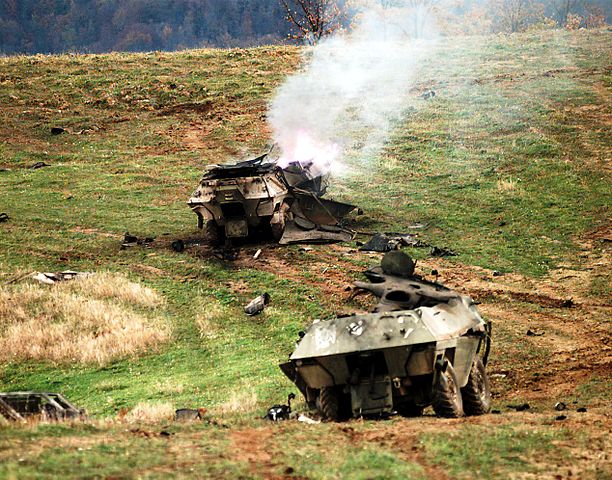
Destroyed Serbian BOV APCs in 1996
Combat Use
Mechanized brigades of the JNA were quickly equipped with the new vehicle. A mixed antitank company had organically a command platoon, 2 batteries of 6 self-propelled 90mm M-36 or 100mm M-44 guns, a rocket battery of 4 self-propelled launchers 9P133, or 6 POLO M-83.At the end of the eighties, these self-propelled AT launchers were included in the mixed divisions of motorized brigades and individual regiments (with mixed divisions formed of 6 POLO M-83 and 6 T-12 cannons). At the end of the eighties, a new vehicle based on the BVP M-80 was designed for the needs of the JNA, with the same rocket launcher as the POLO M-83, but a smaller number was made by the time the country disintegrated, probably within the zero series.
After the disintegration of the JNA, the POLO M-83 found itself in all new armies. According to some sources, there were 70-80 of these vehicles in the Yugoslav/Serbian Army. In the brigades of the Serbian Wax, the POLO M-83 is part of the support company, together with 120 mm mortars.
During the Yugoslavian war in the 1990s, the BOV's relatively weak armor protection and insufficiently protection of the MG-gunner were made self-evident. The practical experience with the armor was written in the memory of retired colonel Dragoljub Jevđović, who spent his entire working life in the military police.
"As far as I know, the Slovenian police first asked TAM to develop an armored vehicle for her needs. Later, in a demonstration exercise (1984 or 1985), people from the Army liked that vehicle. , primarily the military police, so it started to develop according to the "tactical and technical requirements" (TTZ) of the military police and the OMJ Administration. The first specimens from the so-called "0" series were delivered to the Guards Brigade in 1986. They had a 12.7mm Broving machine gun installed.
Later specimens were delivered with the M-86 7.62mm machine gun version as defined TTZ, and it was the standard for JNA armored vehicles.In the beginning (according to TTZ) the main purpose of this machine gun was PVO collimator sight for shooting at targets in the airspace). However, practice has shown that its basic purpose to act on targets on the ground. That is why the Browning machine gun was a more practical and better solution. That the vehicle was conceptually well solved is confirmed by the fact that they are still in use today about the armies of Slovenia, Croatia, Bosnia and Herzegovina, Serbia and Montenegro.
It seems that the Croats used it in Afghanistan. There are a lot of flaws. For example, a weak engine, weak armor protection (driver's and commander's glasses have a better degree of protection than armor), can not swim, etc. However, we have no better than that. Buying a new one for this purpose seems expensive. By the way, sometime in 1991, it cost about 700,000 DM at the time."
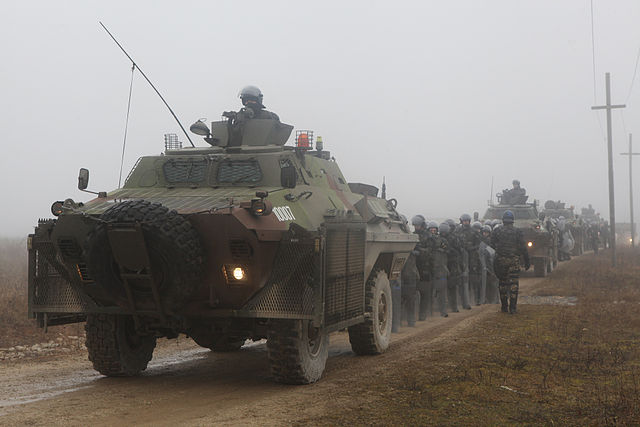
Slovenian soldiers prepare to conduct riot control operations during the Kosovo Force KFOR 18 Mission Rehearsal Exercise at the Hohenfels Training Area in Germany Jan 18 2014
Operators
Bangladesh: Army 8+ BOV M11s*.Bosnia-Herzegovina: 32 BOV-1s APC
Croatia: 33 BOV-3, 20 BOV-1, 6 BOV-VP
Montenegro: 8 BOV-VP, 9 BOV-1
Serbia: 51 BOV-VP, 48 BOV-1 with 9M14 Malyutka Slovenia: Numbers unknown, retired.
Links
The BOV on WikipediaOn the BOV family
The M86 APC on srpskioklop.paluba.info
Video Novi BOV (2nd gen)
ghostarchive.org footage
Yugoimport page on the BOV-VP
ВОЈСКА СРБИЈЕ Званични веб сајт (archives)
On man.fas.org
On vojska.net
On militaryfactory.com
BOV VP specifications | |
| Dimensions | 5.7 x 2.53 x 2.33 m |
| Total weight, battle ready | 9.10 tons |
| Crew | 2+8 (driver, co-driver, MG-gunner, 7 infantry) |
| Propulsion | Deutz F6L413 diesel 150 hp (110 kW) 25 hp/t |
| Suspension | Coil Springs and Dampers |
| Speed (road/water) | 95 kmh |
| Range | 500 km (310 mi) |
| Armament | See notes |
| Armor | 8 mm overall (0.34 in) |
| Total production | Circa 565 1983-95 |
Illustration references
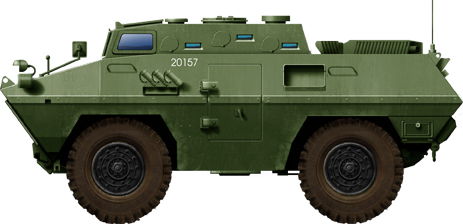
BOV VP in its basic form in 1989

BOV VP Yugoslavian war, 12.7 mm M2HB
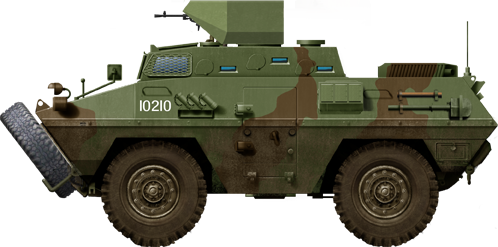
Slovenian BOV VP
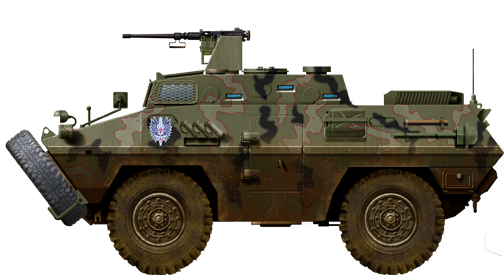
Croatian BOV VP
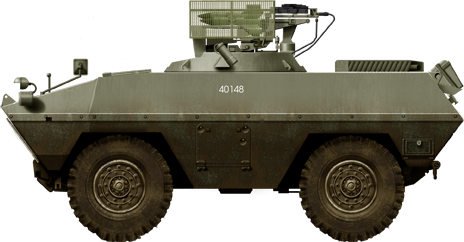
POLO M83
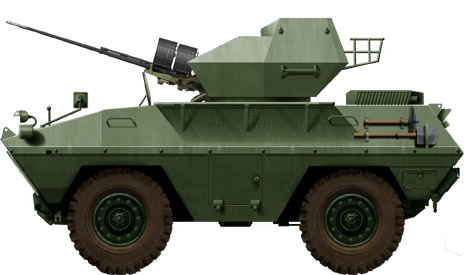
BOV-3 SPAAG
Gallery
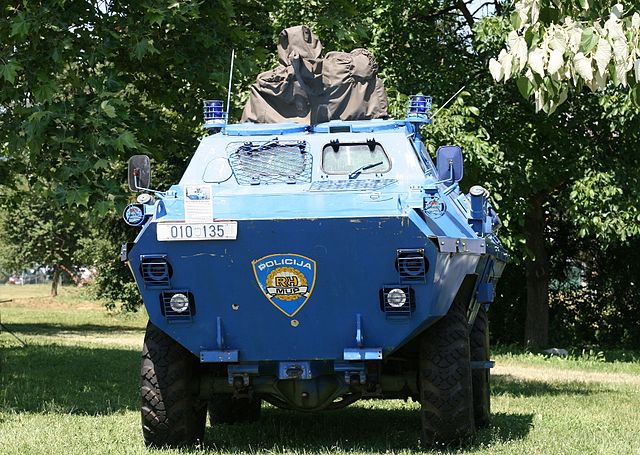
BOV of the Croatian Police
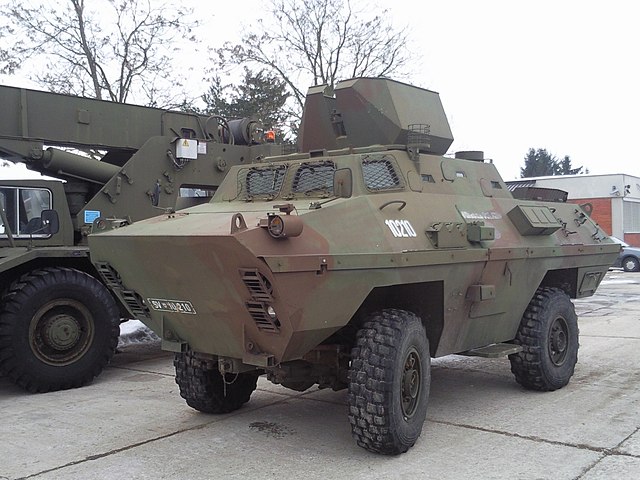
Slovenian BOV-VP APC (now retired). Not the specific MG shield.
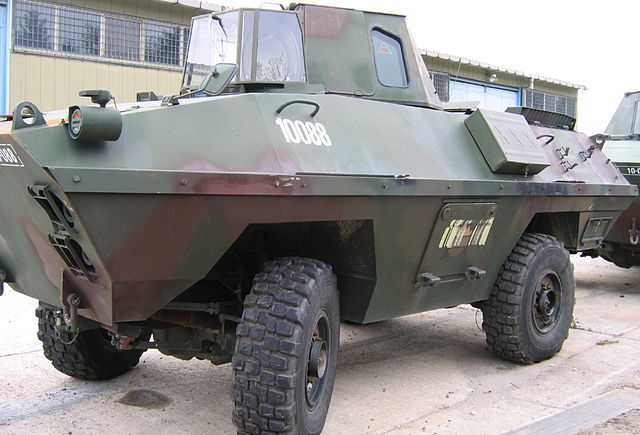
BOV used for driver training
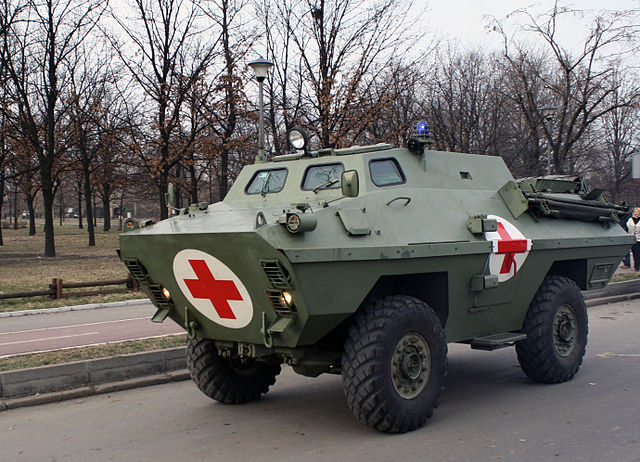
BOV Sn (Sanitary) ambulance
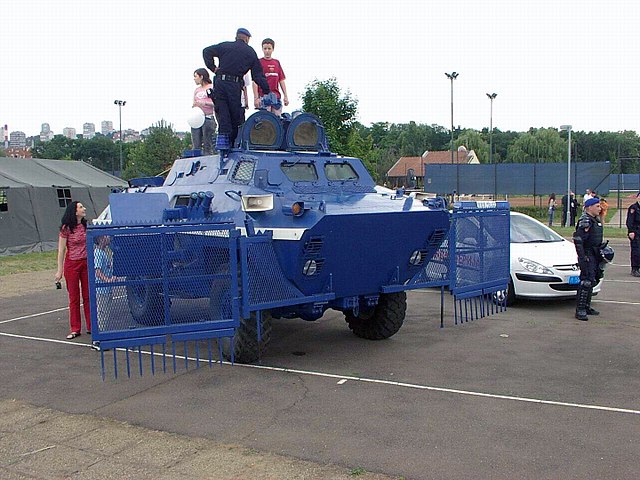
BOV-M, Serbian Militia Police
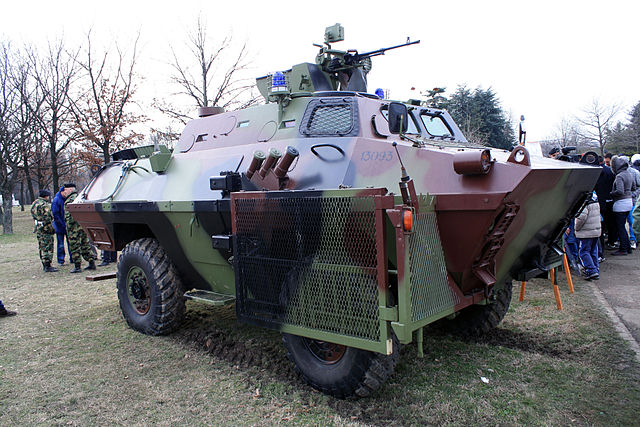
BOV VP of the Serbian Military Police with anti-riot gear and PKT MG
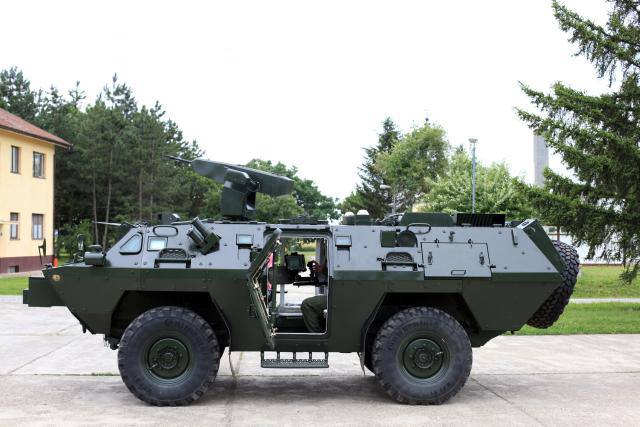
BOV M11/23 APC as of today
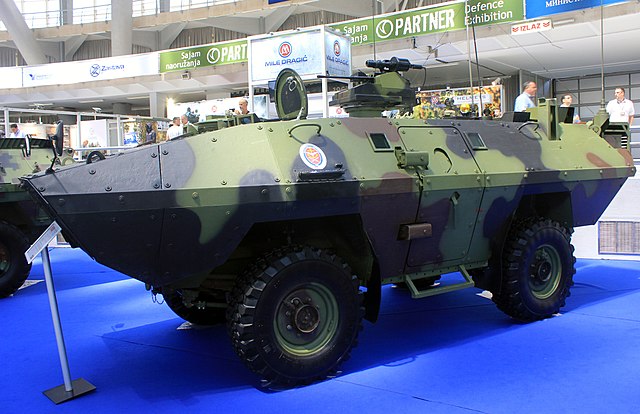
BOV KIV (Novi IV)
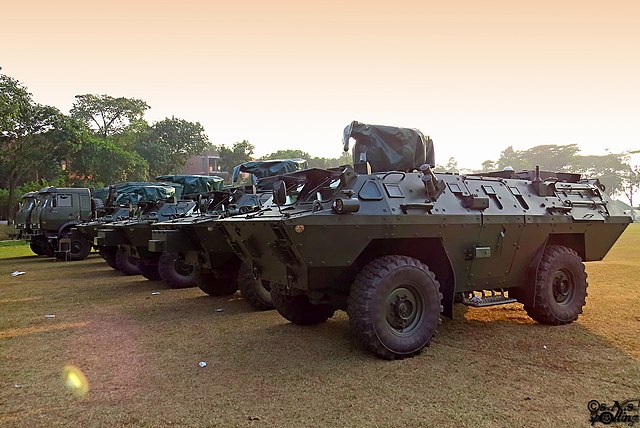
Bangladeshi BOV M11 APC, the ony export order for the vehicle.

Cold War Tanks


































Cold war tanks posters

Cold War Main Battle Tanks

Cold War Soviet Army
Museums, Movies, Books & Games
The Tanks and Armor in pop culture
Tanks and armored vehicles in general are only really grasped when seen first person: The mass, the scale, it's all there. Explore also the way tanks were covered in the movie industry, in books and in video games.Movies:
Best tanks movie on warhistoryonline.com
On imdb.com
On bestsimilar.com/
miltours.com
liveabout.com/
watchmojo.com
Video Games:
pcgamesn.com
historyhit.com
levvvel.com
vg247.com/best-tank-games
mmobomb.com/
alienwarearena.com
